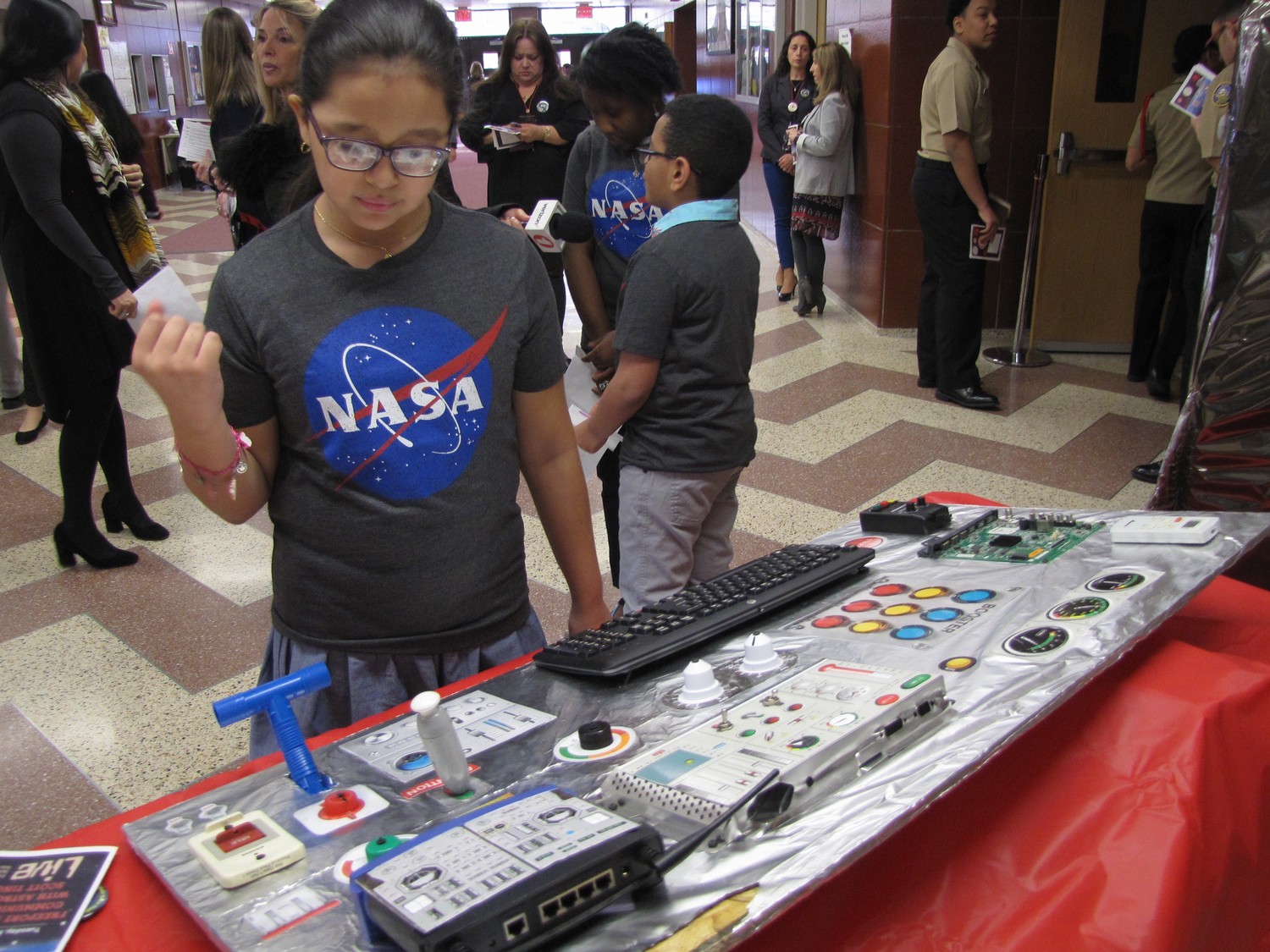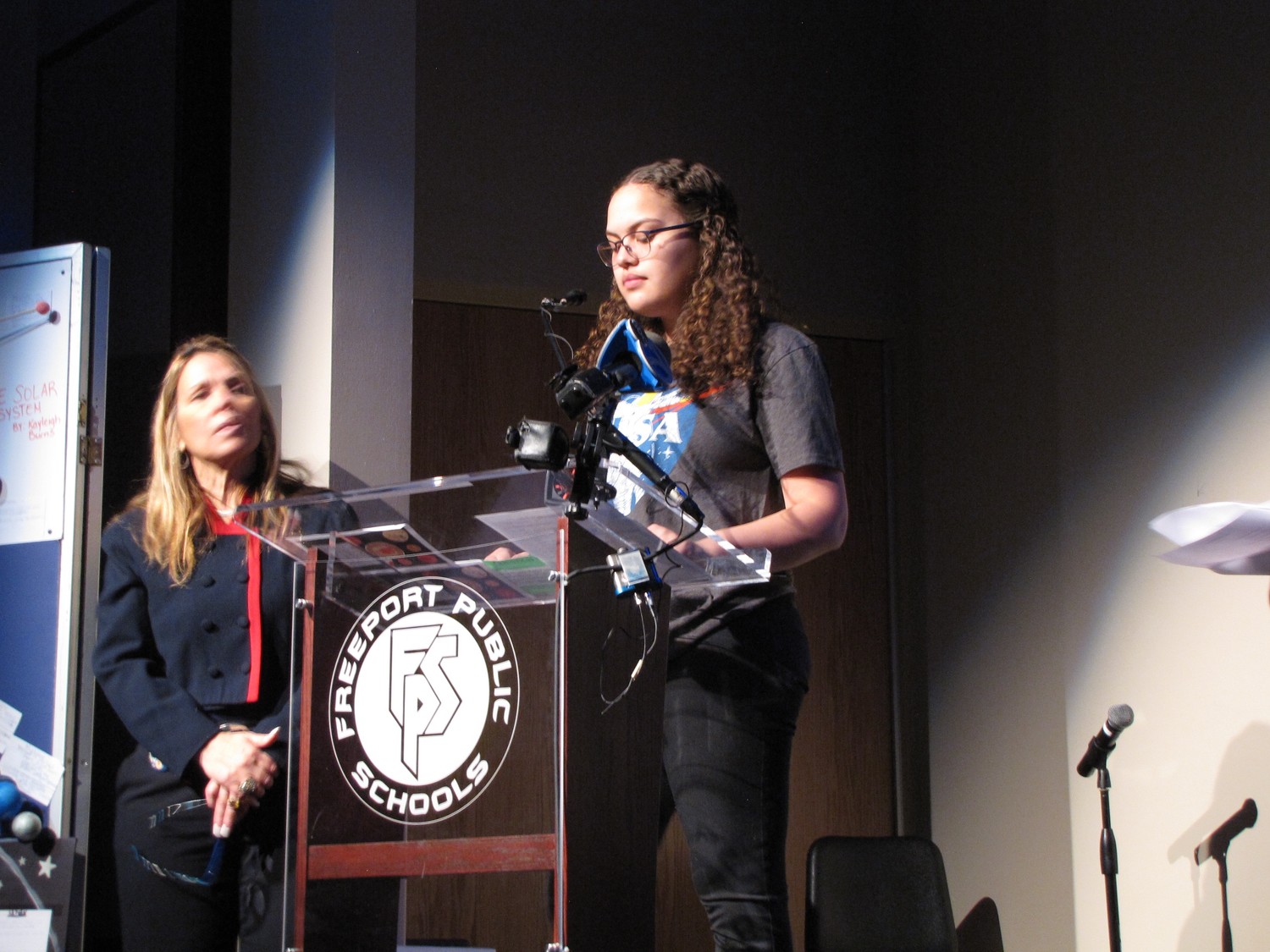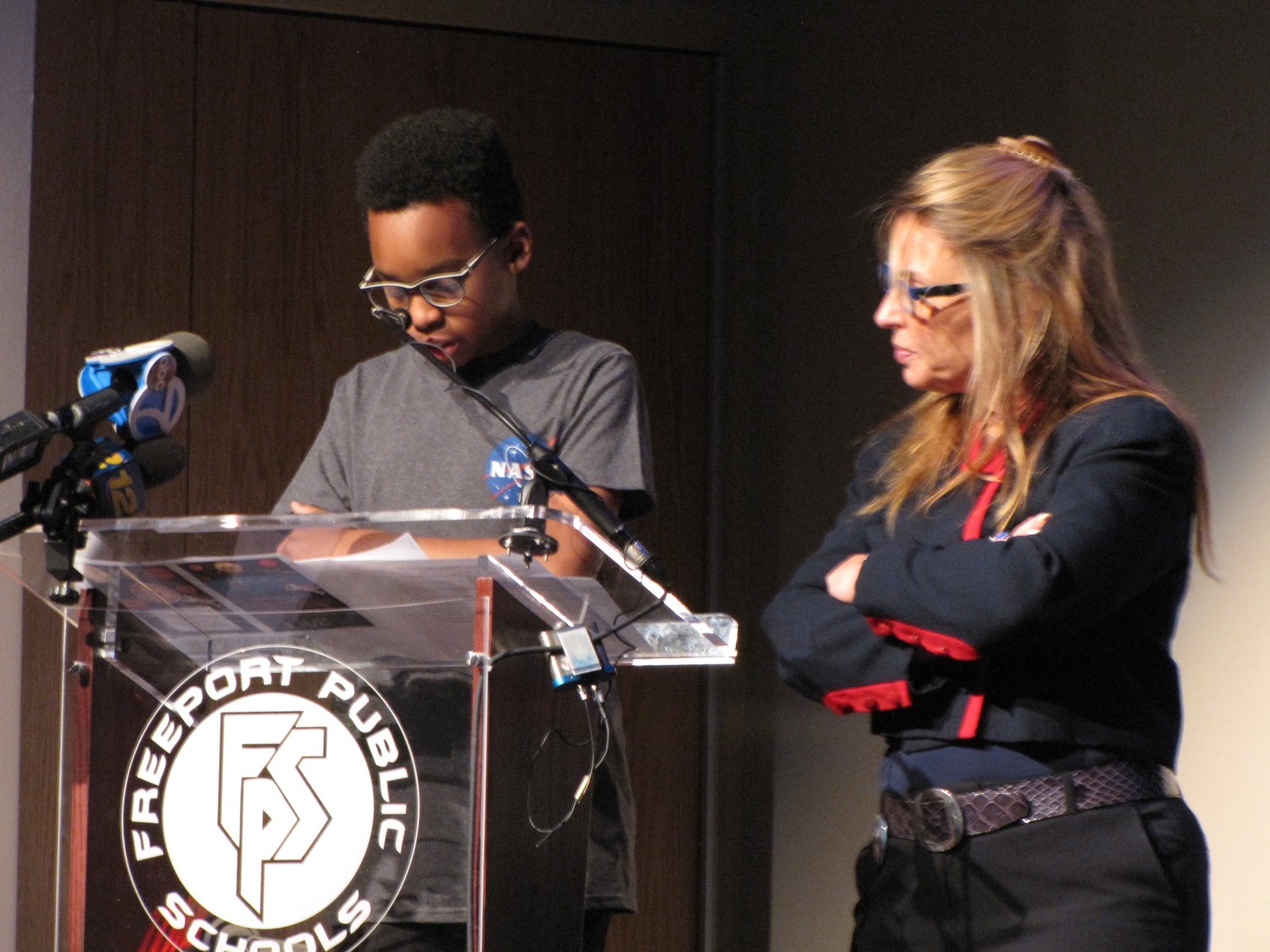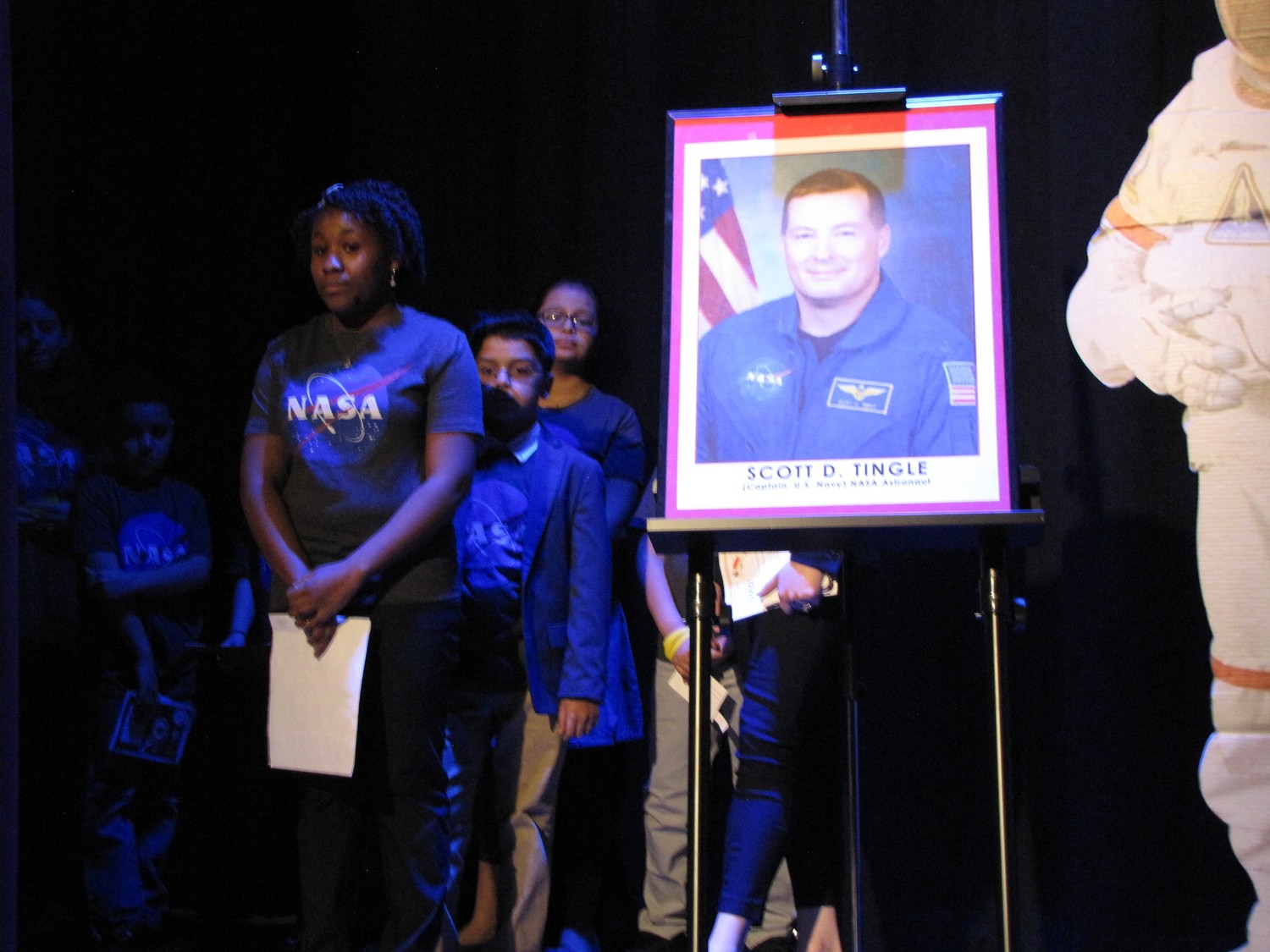Freeport students talk with astronaut on International Space Station

Adisa Johnson was as excited as if he’d just walked on the moon. “I still can’t believe that I spoke to an astronaut on the [International Space Station],” the 15-year-old Freeport High School student said, taking a deep breath.
He was one of 10 students from the Freeport Public Schools who were given the opportunity to ask questions of astronaut Scott Tingle aboard the space station on March 27, during a session in the school’s Performing Arts Center. Tingle is also a U.S. Navy captain, and an alumnus of Southeastern Massachusetts University and Purdue University.
The Freeport district was one of 13 across the country chosen by NASA to chat with astronauts aboard the ISS. Freeport’s session lasted 10 minutes, while the astronauts were orbiting over Africa. The students asked a total of 15 questions.
The students selected to ask Tingle questions took part in a districtwide essay contest in which they detailed an astronomy research topic of their choice and proposed a question they wanted to ask the astronaut.
Before Tingle connected with the students, Dr. Mary Anne DeVivio, the district’s assistant superintendent for curriculum and instruction, asked Ava Smith, a New Visions School fourth-grader, to read an excerpt of her essay.
“I want to be the first kid to go into space,” Smith read aloud to the students. “That’s why I want to know how age affects how the body reacts in space. How will space affect my body as a young girl?”
Once the connection to the ISS was live, the students stepped one by one to a lectern to ask Tingle their questions. After each one, Tingle offered his thoughts. Ten-year-old Gabriela Aleman, a Leo F. Giblyn School fourth-grader, asked him what the changing of the seasons looked like from space.
“As we orbit around the planet, we see every season from around the world in a single day,” Tingle responded.
He explained that the space station orbits the Earth at 17,150 mph. As it travels, astronauts are able to see a sunrise once every 92 minutes.
After speaking with Tingle, Adisa Johnson said he was inspired to pursue a science degree and follow in the astronaut’s footsteps. “Astronomy isn’t my main goal,” Adisa said. “I want to study theoretical physics, and I want to go to Purdue, like Scott Tingle, or even Cambridge, in the United Kingdom. With that kind of degree, it can still allow me to explore astronomy if I want to later.”
There are six astronauts aboard the space station: two from Russia, three from the United States, including one woman, and one from Italy. The crew members are studying more efficient solar arrays, the physics of neutron stars, a new drug to fight osteoporosis and the effects of prolonged microgravity on the heart.











